| Published
on 30
Mar
2021 |
All rights reserved.
|
|
|
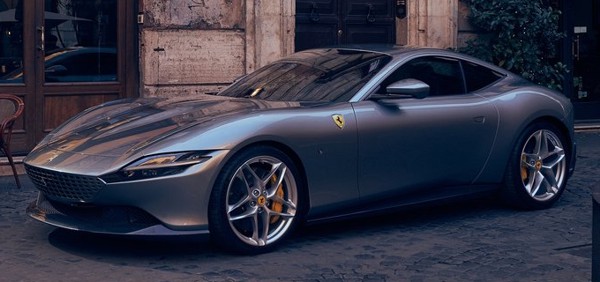
|
|
From
California to Roma, it is closer than you might think.
|
|
It is always pleasurable
to see the introduction of a new Ferrari, especially as beautiful as
this one. Roma has not only a beautiful name but also a beautiful
shape. Unlike many recent Ferraris, its form is sleek and pure, not
ruined by the needs of aerodynamics. Its waistline rises and falls
smoothly over the wheel arches, very much in the shape of 308GTB. The
shark nose has a mesh grille fitted flush. The bonnet and sides of the
car are clean and smooth, without any openings to interrupt the
surfaces. Ferrari has not designed such a pure form for a long time. It
might be the most beautiful Ferrari in modern time, at least for one
with an engine mounted at a position preferred by Enzo Ferrari. The
mid-engined 458 Italia looks more exotic, of course, but the Roma is
certainly purer.
The Roma is derived from the platform of Portofino. The Portofino (and
its predecessor California) has always been a bit underperforming in
Ferrari's lineup. Priced at £166,000, it is the cheapest Ferrari,
yet the sales volume does not match its entry-level price. Why? Because
it is not great enough by the standards of Ferrari. Its retractable
hardtop has some negative effects to its weight, hence performance, as
well as its looks. If Ferrari needs to recoup its development cost, the
best way is to build a hardtop coupe based on the same architecture.
Roma is that car.
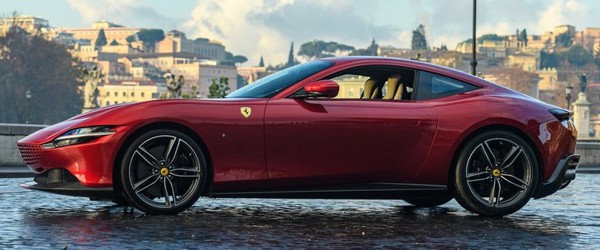
|
|
Ferrari
describes it as a sports car as well as an everyday GT.
|
|
Priced at £171,000, the Roma sits slightly above the Portofino
but below all other Ferraris. Its direct competitors will be Aston
Martin Vantage, DB11 as well as Porsche 911 Turbo, if not the more
luxury-biased Bentley Continental GT. Ferrari describes it as a sports
car as well as an everyday GT. The latter is evident with the optional
+2 seats, although you'd better not to fit human into them.
The car's aluminum spaceframe architecture is based on that of the
Portofino, sharing the same wheelbase of 2670mm, but it is slightly
longer, wider and lower to achieve the better proportion. The chassis
is fundamentally 10 percent stiffer than that of the Portofino even
without considering the extra rigidity contributed by the hardtop.
Ferrari claims 70 percent of the chassis components are new or
modified, although they are usually less critical ones. Suspensions are
basically unchanged except the fine tuning of springs and dampers. The
front springs are actually the same, while the rears are softened by 10
percent as they don’t need to bear the weight of the retractable roof.
For the same reason, front-to-rear weight distribution is changed from
44:56 to 50:50, seemingly less favourable for a rear-drive machine, but
consider this: the entire car is 94kg lighter, and the combination of
ditching the heavy roof mechanism and a lower mounted driveline results
in center of gravity dropped by 20mm. In addition to slightly wider
tracks and the aforementioned softer rear springs, ride and handling
must be significantly improved. Moreover, the Roma employs the latest
generation of electronic driving aids, namely Side Slip Control 6.0 and
Ferrari Dynamic Enhancer.

|
|
The
power feels forceful, the throttle response is sharp, the power
delivery is more linear than most turbocharged engines.
|
|
The power unit remains to be that 3855 c.c. twin-turbo V8, not the 3902
c.c. unit employed by its mid-engined siblings. However, Maranello has
done some modifications to comply with tighter emission regs without
losing horsepower. There are new cams with higher valve lift, new
turbine speed sensors and removal of exhaust silencers to offset the
addition of gasoline particulate filters. As a result, output is
boosted slightly by 20hp to 620hp, while maximum torque is virtually
unchanged at 561 lbft.
The gearbox is updated from the Portofino’s 7-speed dual-clutch to a
new 8-speed unit, derived from that of SF90. Not only it has closer and
wider spread of ratios, but it is also 6kg lighter than the old unit
and mounted lower in the chassis, thanks to a smaller diameter clutch.
It shifts quicker, too, by 15 percent on upshift and 21 percent on
downshift, thanks in part to better integration with engine ECU.
The Roma is quoted the same 199mph+ top speed as Portofino, but the
combination of lower weight and slightly more horsepower results in
quicker acceleration. It takes 3.3 seconds to go from 0-60, just a
tenth quicker than the convertible, but 0-124mph is improved sharply
from 10.8 to 9.3 seconds. Excluding top speed, it is easily quicker
than the aforementioned Aston and Bentley rivals, if not the new 911
Turbo S. As far as a front-engined GT is concerned, it is virtually
unrivalled.
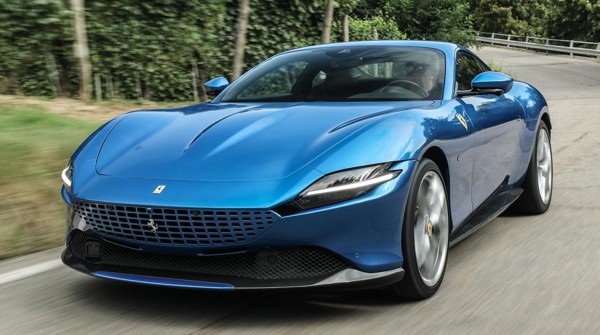 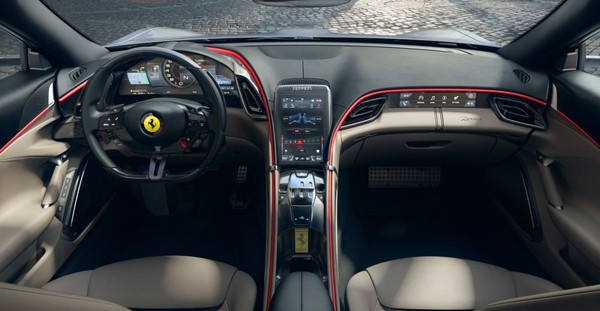
|
|
The
Roma will get you from A to B with remarkable comfort.
|
|
While the exterior looks purely Ferrari, the interior is less
traditional. In fact, its twin-cockpit design looks more like a
Corvette than Ferrari. The instrument pod, too, has abandoned Ferrari’s
traditional analogue rev counter for a 16-inch full TFT display, which
is shared with SF90. On the bridge-style center console, an 8.4-inch
tablet touchscreen is provided for controlling air-con, heater and
audio. The steering wheel has touch-sensitive pads as well as a
touch-sensitive engine start button – sorry, no more dedicated red
engine start button on console. The famous Manettino switch, too, is
located at the steering wheel, but now it provides 5 modes, including
Race mode, which is available to Ferrari’s GT for the first time. Other
modes are Wet, Comfort, Sport, Race and ESC-off. In addition, the
suspension has Bumpy road setting.
The rear seats are basically usable for luggage, but the front seats
are soft and comfortable for long trips. Space is of course far more
generous than a McLaren calling itself “GT”. After all, this is a car
built from aluminum spaceframe instead of a carbon-fiber tub. It feels
every bit a GT should feel. You sit nearer the rear axle, visibility is
not great but good enough for everyday driving. The view forward over
the long bonnet with rising flanks at either side is quite exotic. The
controls on steering wheel are handy, easy to navigate and view from
the TFT screen up front. In contrast, the touchscreen with haptic
feedback is a little clumsy, but you rarely use it anyway. Driving a
Ferrari is always about the driving experience, although the Roma will
get you from A to B with remarkable comfort, thanks to its supple ride
in Comfort mode and effective suppression of road noise. Delightfully,
exhaust noise remains ever present, although some might find the
flat-plane crank V8's soundtrack too gruffy for a grand tourer.
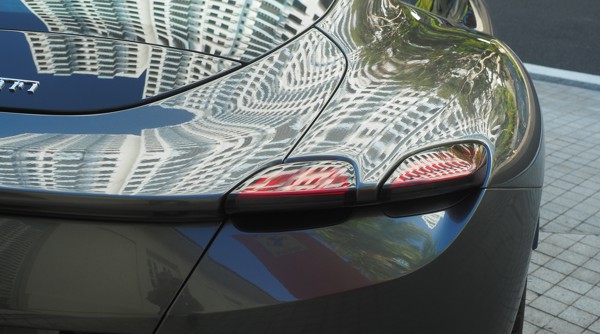 
|
|
So
good in every aspect that its gorgeous look is only icing on the cake.
|
|
The Roma might be the one of the least powerful Ferraris, but it is
still very fast for a GT. The power feels forceful, the throttle
response is sharp, the power delivery is more linear than most
turbocharged engines, and it is eager to rev beyond 7500 rpm.
Meanwhile, the dual-clutch gearbox is just perfect, incredibly
responsive. It picks up speed with greater enthusiasm than the
Portofino.
Yet the chassis is even better. For starter, its steering ratio is
direct but not as overly aggressive as other current Ferraris. This
gives it a calmer and more intuitive feel that suits a sporting GT.
When attack corners, the Roma rolls less than the Portofino while it
rides better. It feels lighter on its feet, more precise and more
agile. Mid-corner bumps don’t seem to hurt its composure either, as its
softer suspension and stiffer structure absorb bumps easily. The
chassis steers neutrally, with power slide available under ESC-off, but
you need a track or an empty hairpin to demonstrate. The brakes,
carbon-ceramic optional, serve up phenomenal stopping power and superb
feel.
What the first V8-powered GT from Maranello excels is the combination
of speed, comfort, handling and driver engagement simultaneously,
something not even Aston Martin manages to do as good. The fact that it
also looks gorgeous is only icing on the cake.
|
Verdict:      |
|